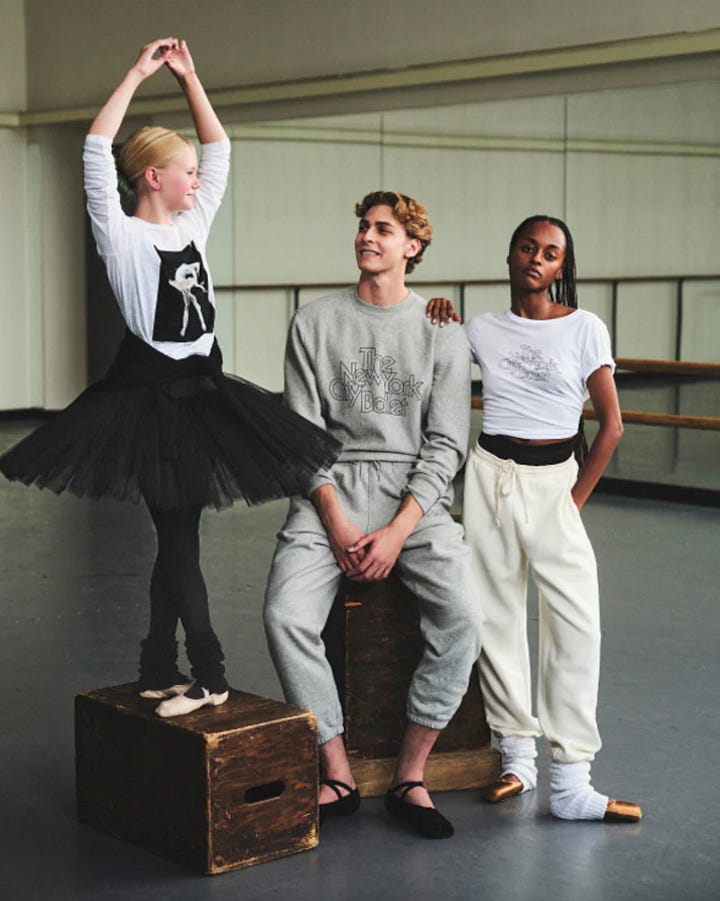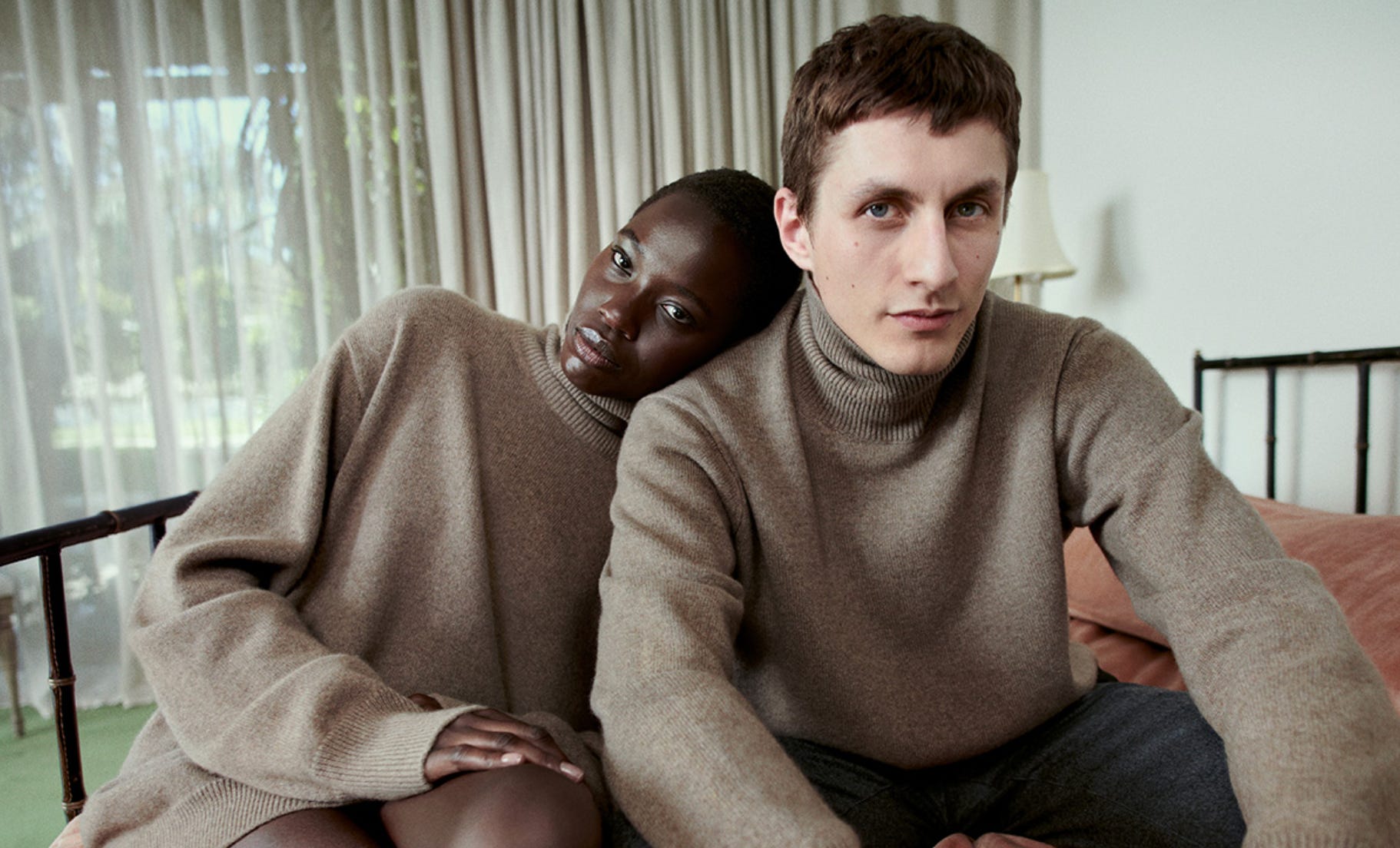The Panic Edition
It's been a while, but the story goes on: how streetwear may save J. Crew, why CMOs are the new CEOs, and death-by-distraction for Farfetch.


Yeah, yeah, yeah — consistency is key, and I haven’t published in about six weeks. Real life got in the way. As a result, some of the content below might be dated, but I’m hoping my thoughts are not.
(Side note: I’m not sure what subscriber tipping point merits an apology, but I’m excited to see even a few hundred of you here, so I’m going to pretend I’ve reached that point.)
As always, thank you for being here. If you like what you read, please subscribe and share, and if you have thoughts of your own, don’t hesitate to reach out.
I. Brendon Babenzien at J. Crew
I’ve been a Noah customer and Babenzien fan for a while now. Babenzien educates without being didactic, weaving meaningful stories into Noah’s products and content with a calm that befits a streetwear brand. The subtlety is impactful.
To the surprise of many, he became J. Crew’s creative director in 2022, and he’s maintained his signature ease in a way that retrieves the customers the brand lost in its wayward years without alienating those who stuck around. (I fell into the first camp in middle school.)
The nuance is in the storytelling, and the rollout of his Union LA collaboration is a perfect example. Union LA’s founder, Chris Gibbs, worked with Babenzien at Supreme, and the story they’ve chosen to tell is the story of their friendship. The J. Crew crowd learns about Babenzien’s world, and the Babenzien crowd eases toward trusting J. Crew. The friendship makes the partnership feel natural.
*Since I wrote this, Babenzien released a collection with New York City Ballet, which sold out in one day. How these seemingly disparate collaborations — a streetwear brand, then a dance company — both work is part of the magic. Neither feels forced, and credit goes to the storytelling.
It’s a tough time to be a CMO. As Business of Fashion reports, the average tenure has shrunk to 3.3 years, the shortest of the C-suite, partly because they’re credited with increasing sales but also blamed if sales decline.
There are two factors at play. First, as I’ve said before, ecosystems are changing daily. One day TikTok is a social network, and the next day it’s a shop. Retailers aren’t improving their ad tech, but they still expect significant co-ops. Campaign production was once a biannual process, and now it’s monthly. And yet, a brand as an experience, a consistent expression of values, is more important than ever.
Second, as Chris Ross from Gartner explains, CMOs now “have to understand all of it: the product, your channel strategies, even supply chain. You have to have a much deeper holistic knowledge of the business, because things are so closely integrated.” Success hinges on a holistic strategy, but CMOs don’t control every aspect of it. If, say, inventory runs out, the retail experience doesn’t reflect the online experience, or TikTok Shop turns into a hacky Amazon, sales decline, and CMOs take the heat.
For those who want it, the upside is that CMOs are now becoming CEOs. Former Gucci CEO Robert L. Triefus is now the CEO of Stone Island; former L’Oréal marketing director Damien Bertrand is now the CEO of Loro Piana; former Dunhill CMO Jenny Galimberti is now CEO of JW Anderson. The list goes on.
In a way, these transitions reflect an exciting opportunity. To take advantage, CMOs need to stretch their capabilities to include more fundamental corporate know-how, including how to appease shareholders, but those that do end up in the top seat.
III. Farfetch Desperately Acquires Net-a-Porter
In October, the EU approved Farfetch’s gradual acquisition of Net-a-Porter from Richemont, the Swiss group that owns Cartier, Jaeger-Le Coutre, and Van Cleef & Arpels.
Everyone involved is suffering: Farfetch’s share price is down 90 percent after consecutive quarters of declining sales; Farfetch’s brand incubator, New Guards Group, which owns Off-White and Palm Angels, has seen a 40 percent decline in revenue; Richemont is taking a €3 billion write-down on the sale; and retailer Violet Grey, which Farfetch acquired for $50 million in 2022, is back on the market.
As Business of Fashion points out, the core issue is ultimately a lack of focus. Owning a retailer has only hurt Richemont, a brand group, and owning a brand group has only hurt Farfetch. As I shared previously, even Amazon found that private label ownership was hurting its core revenue drivers, and DTC brands are going back to retail.
At the end of the day, spending billions to own a single point of sale or spending billions on brands to add to your single point of sale may result in efficiency for that one point of sale, but it doesn’t make a brand. Spend that money on diversifying those points of sale, not consolidating them.





